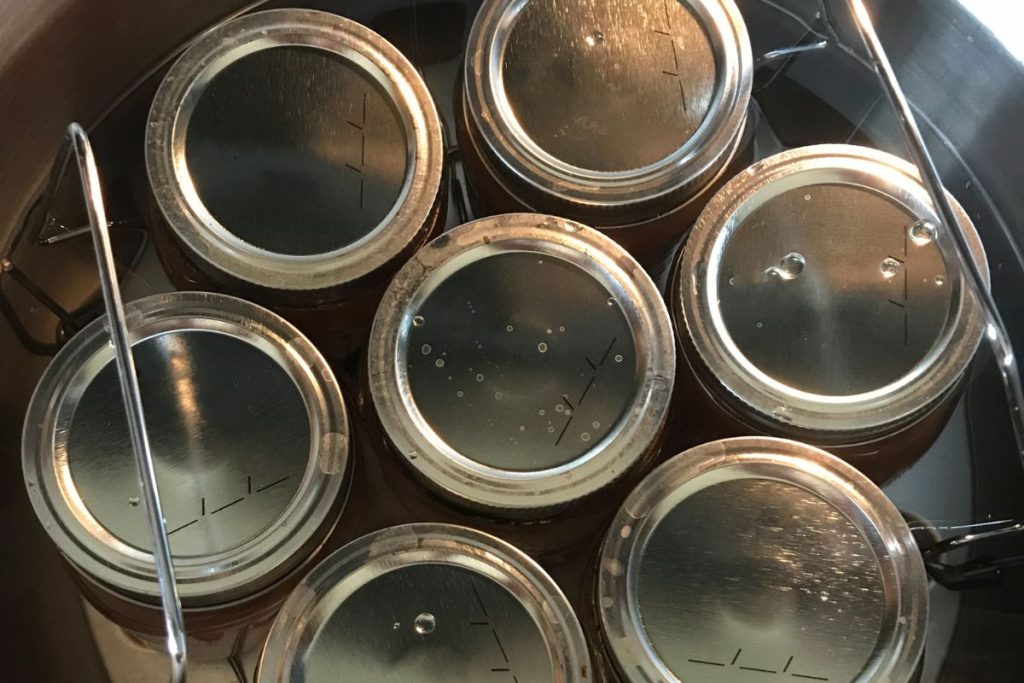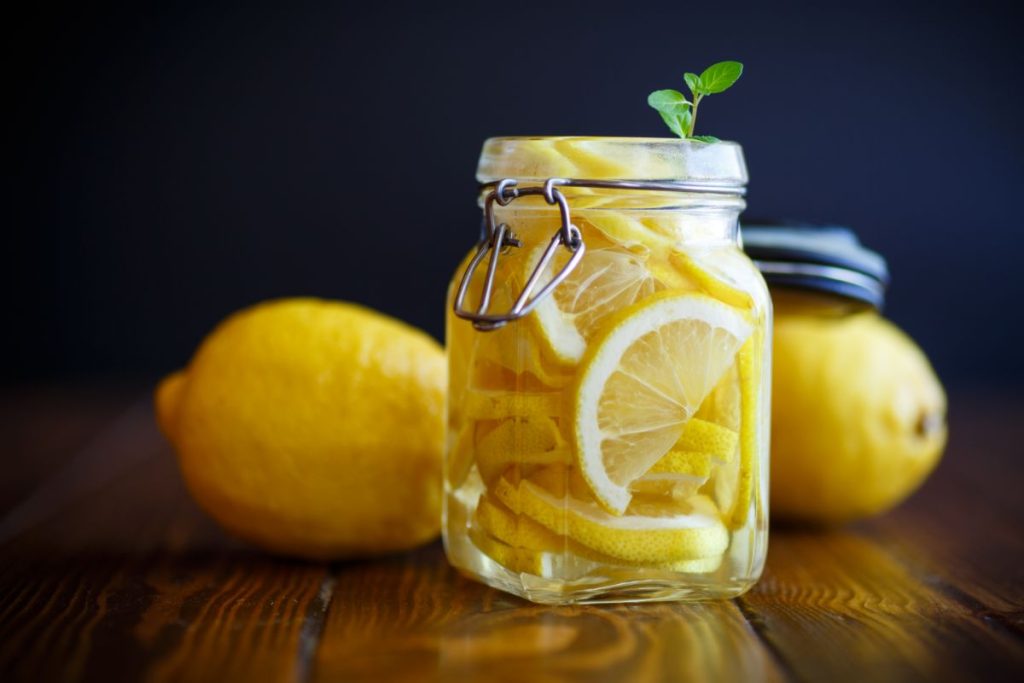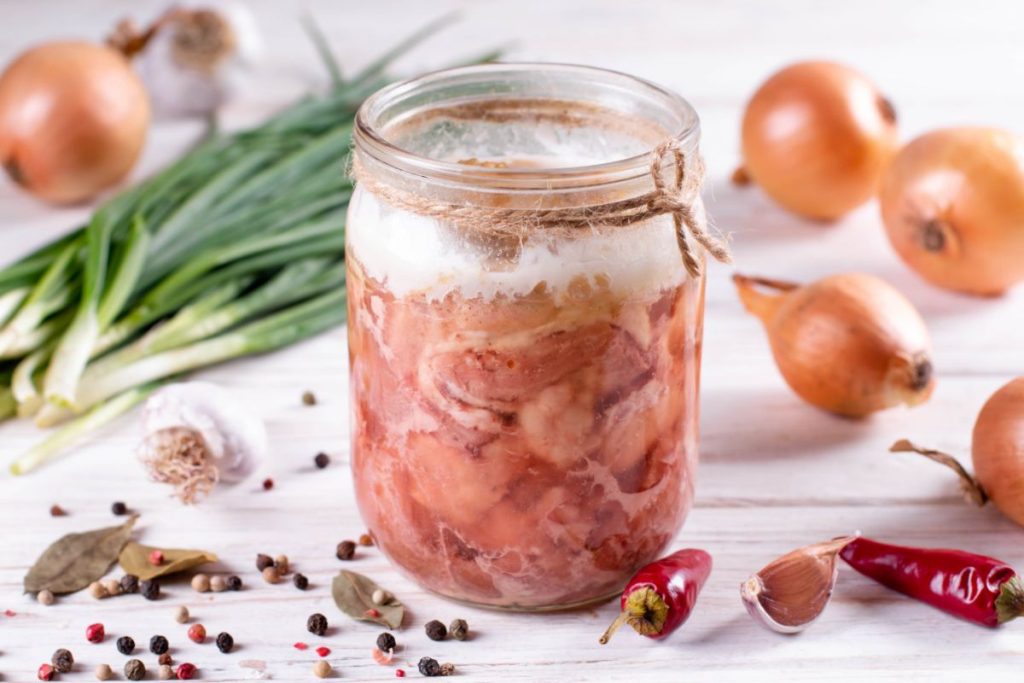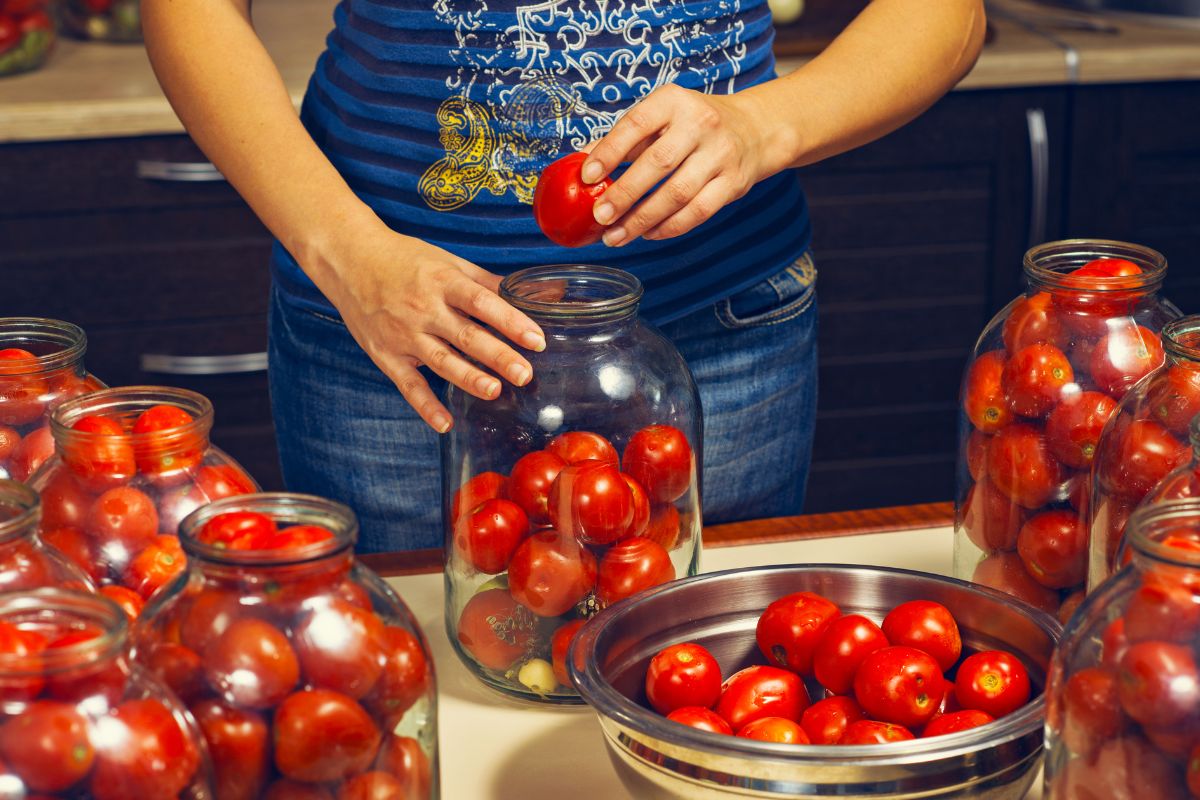Cold pack canning is a safe way to preserve raw or uncooked, high-acid foods. It involves placing raw food into hot sterilized jars and covering them with hot liquid before processing the jars in a boiling water canner.
What is Cold Pack Canning?
Cold pack canning is also called raw pack canning. Cold pack canning is when uncooked or briefly blanched foods are covered with boiling liquid in canning jars and processed in a boiling water canner.
The cold-pack canning method is ideal for high-acid food preservation and should only be done using sterilized canning equipment.
How Do You Use the Cold Pack Method?
Here are the steps to follow for the cold pack method:
- Wash and rinse your canning jars, ladle, screw bands, jar lifter, funnel, and canning lids in hot soapy water.
- Wash and prepare the food that you wish to can. Leave the food raw or blanch briefly, as needed.
- Immerse the canning jars in boiling water for 10 minutes to sterilize. Remove them from the water using a jar lifter and place them on a clean towel.
- Pack the food into the jars using a funnel or ladle, leaving 1/2 to 1-inch headspace, as specified in your canning recipe.
- Use a clean utensil to remove any air bubbles from the jar.
- Wipe the rims of the jars with a clean towel to remove any food particles or liquid.
- Cover the jars with the lids and then screw on the bands until fingertip tight.
- Place the filled jars into a large pot of boiling water, making sure that the water covers the jars by at least one inch.
- Boil for the recommended time specified in the recipe, adjusting for altitude.
- Use jar lifters to remove the jars from the water and place them on a clean towel to cool undisturbed for 12–24 hours.
- After the jars have cooled, check the seals by pressing down on the center of the lid. If the lid pops up and down, the jar is not sealed and should be refrigerated or reprocessed.
- If the lid is firm and does not move, the jar is properly sealed and can be stored in a cool, dry place.

What are the Benefits of Cold Pack Canning?
- Energy efficient. Cooking is not required, meaning less energy is used in preparing the food.
- Preserves texture. Foods retain a more natural texture and don’t soften as much.
- Pressure canner not required. Cold pack canning can be done in a water bath.
- Retains nutrients. Food is not pre-cooked, so more nutrients are retained.
- Saves time. Hot pack canning requires more prep work.
Why Do You Have to Blanch Food for Cold Packing?
Some foods may require blanching in boiling water before cold packing. Blanching inactivates enzymes responsible for the loss of texture, flavor, and color while canning.
What Foods Are Best for the Cold Packing Method?
The best foods for cold packing include:
- Fruits such as cherries, pears, and peppers
- High-acid fruit juice such as lemon juice
- Pickled vegetables such as cucumbers and green beans

What’s the Difference Between Cold Pack and Hot Pack Canning?
Cold-pack canning is not ideal for all types of food. This method is only ideal for high-acid fruits and products such as fruit jam or jelly.
In the hot pack canning process, food is first cooked before being packed into hot jars and processed either in a pressure canner or a boiling water bath canner. Low-acid foods, like vegetables and meats, must be hot packed to ensure they are safe to eat after canning.

Safety Tips for Cold Pack Canning
If canning for the first time, be sure to follow the National Center for Home Food Preservation’s general guidelines on home canning.
- Adjust the processing time for your altitude.
- Boil canning jars and lids for 10 minutes to sterilize them before use.
- Follow a reliable recipe and don’t alter it, as this can affect the safety of the canned food.
- If you notice signs of spoilage, such as bulging lids, mold, or an unpleasant odor, do not eat the canned food.
- Store canned food in a cool, dry place away from direct sunlight and heat.
- Use canned food within 12 to 18 months.
- Use fresh, high-quality, in-season products.
- Use the correct jar size, and maintain the recommended headspace.
- Wash all canning jars, lids, and equipment thoroughly with hot, soapy water and rinse well before use.

